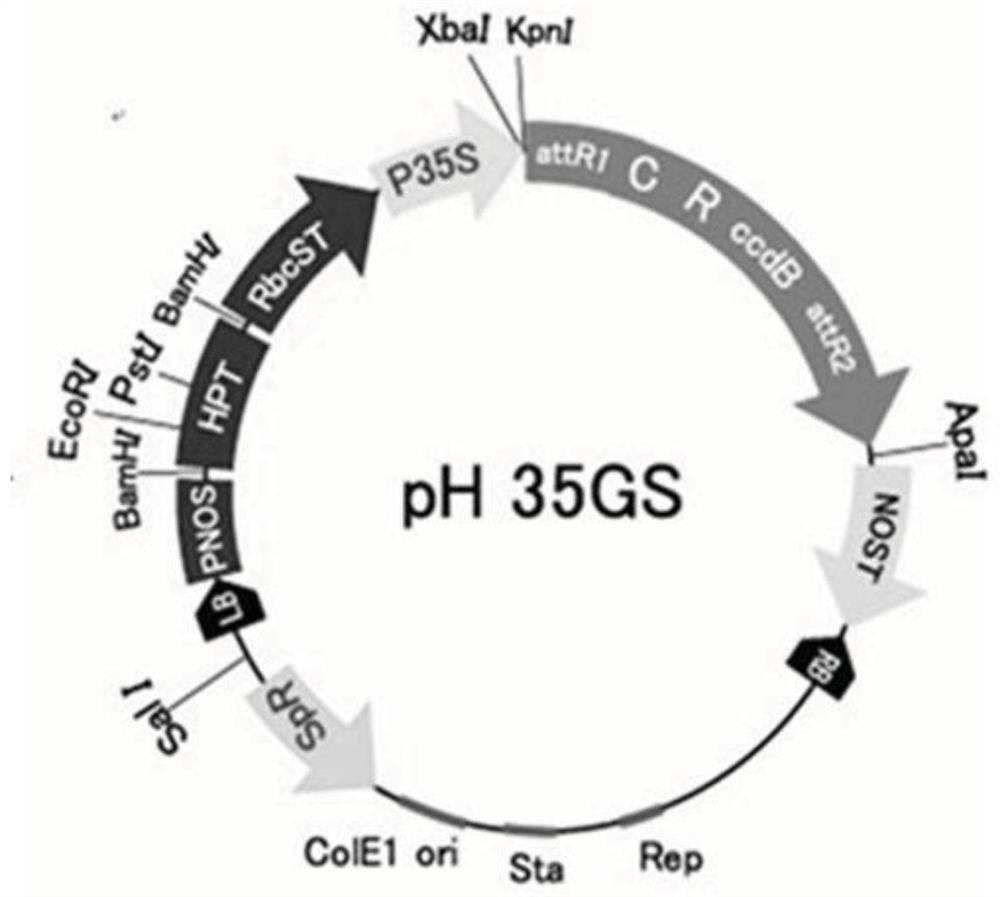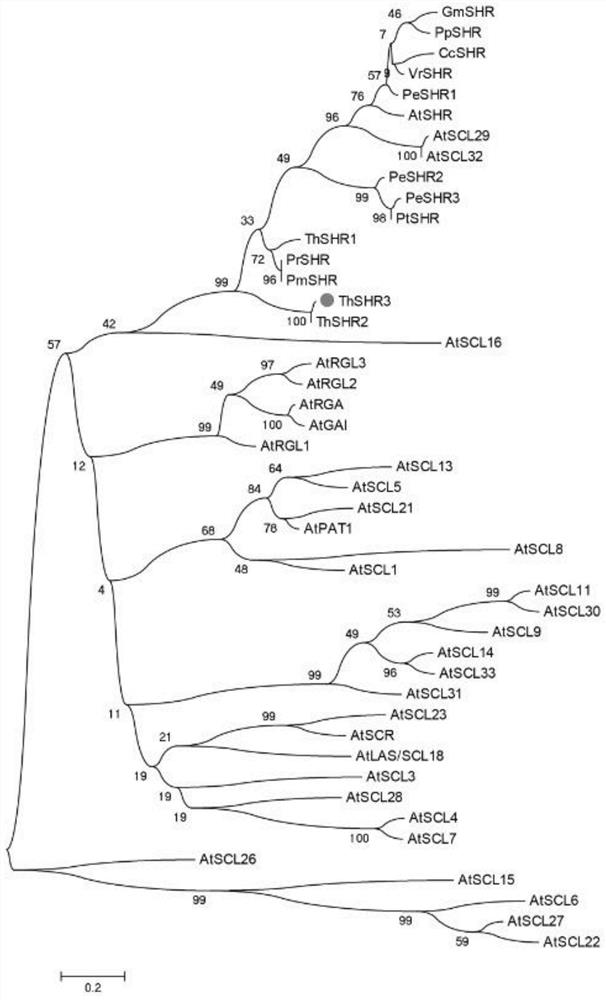Taxodium hybrid 'zhongshanshan' ThSHR3 gene for promoting plant growth and application of taxodium hybrid 'zhongshanshan' ThSHR3 gene
A Zhongshan fir and plant technology, which is applied in the field of plant genetic engineering, can solve the problems of clone rooting ability decline, plant growth dwarfing, rooting ability difference, etc., and achieve growth speed enhancement, stem internode length elongation, and length increase Effect
- Summary
- Abstract
- Description
- Claims
- Application Information
AI Technical Summary
Problems solved by technology
Method used
Image
Examples
Embodiment 1
[0025] Example 1: Cloning of ThSHR3 gene by RACE technology
[0026] 1) Extraction of RNA and inversion of cDNA
[0027] Zhongshan fir 406 (Taxodium mucronatum) collected in the nursery of Nanjing Zhongshan Botanical Garden in July 2019 ×T. distichum )(T.hybrid'Zhongshanshan 406') Adventitious root as material. Use RNAprep Pure Polysaccharide Polyphenol Plant Total RNA Extraction Kit (TIANGEN Company) to extract the total RNA from Shanshanshan. Before extracting RNA, all pipette tips, centrifuge tubes, and mortars should be soaked in 0.1% DEPC water overnight, autoclaved for 40 minutes, and then dried. All solutions should be prepared in 0.1% DEPC water. The extracted RNA was treated with DNase (Tiangen Biochemical Technology Co., Ltd.) to make it purified. The concentration and purity of total RNA were measured with NanoDrop 2000 (Thermo Scientific). And use 2.0% agarose gel electrophoresis to separate the total RNA. Afterwards, the 3'RACE and 5'RACE kits of Invitrog...
Embodiment 2
[0050] Embodiment 2: Construction of ThSHR3 gene plant expression vector
[0051] Using Gateway directional cloning technology, the obtained ORF fragment of the target gene is transferred to the target expression vector, including two parts: BP reaction and LR reaction. The carrier map used in this embodiment is as follows figure 1 shown.
[0052] 1) The purpose of the BP reaction is to transfer the gene fragment to the entry vector, the reaction system: vector ThSHR3 ORF fragment 10-20ng, Salt solution 1μL, pCRTM8 / GW / TOPOTM vector (entry vector) 1μL, add Nuclease-free Water to total The volume was 6 μL, mixed gently, and transferred to ice after reacting at 22°C for 60 minutes; 6 μL of the reaction product from the previous step was transformed into TOP10 competent cells, spread on LB screening culture plates, and single clones were picked for bacterial liquid PCR detection. The primers were gene-specific upstream primers and T7 primers on the carrier, and the positive clon...
Embodiment 3
[0054] Example 3: Sequence alignment and evolution analysis of ThSHR3 gene
[0055] The protein sequence of ThSHR3 was compared with the SHR protein sequences of other plants using ClustalX2 software. The protein sequence of ThSHR3 was compared with the Arabidopsis protein sequence AtSHR in TAIR, the poplar protein sequence PeSHR1, PeSHR2, and the Sequoia protein sequence ThSHR1, ThSHR2 in PeSHR3. The results showed that the N-terminus of ThSHR protein was not conserved, while the C-terminus was relatively conserved. Like the SHR proteins of other species, ThSHR protein included the basic sequences of LHRI, VHIID, LHRII, PFYRE and SAW that are unique to GRAS family members.
[0056]Further use MEGA 7.0 software to construct a phylogenetic tree, the construction method is the maximum likelihood method, and the bootstrap detection is 1000 times. In this study, the phylogenetic tree analysis was performed on the amino acid sequence of ThSHR3 and the published 45 GRAS amino acid ...
PUM
 Login to View More
Login to View More Abstract
Description
Claims
Application Information
 Login to View More
Login to View More - R&D
- Intellectual Property
- Life Sciences
- Materials
- Tech Scout
- Unparalleled Data Quality
- Higher Quality Content
- 60% Fewer Hallucinations
Browse by: Latest US Patents, China's latest patents, Technical Efficacy Thesaurus, Application Domain, Technology Topic, Popular Technical Reports.
© 2025 PatSnap. All rights reserved.Legal|Privacy policy|Modern Slavery Act Transparency Statement|Sitemap|About US| Contact US: help@patsnap.com



